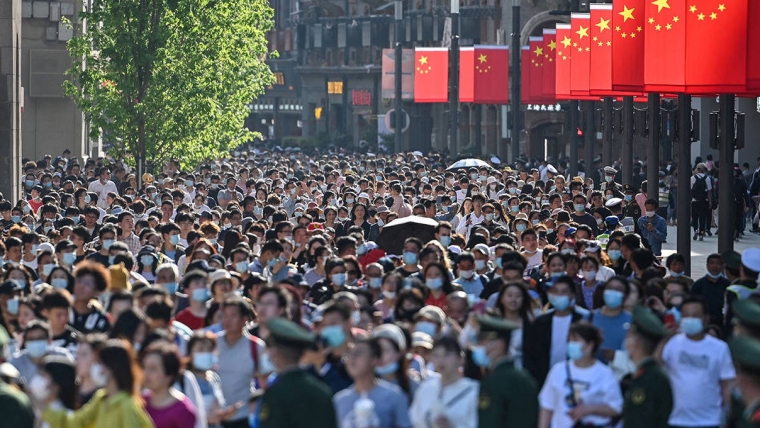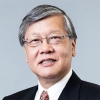
By Andrew Sheng and Xiao Geng
Will the United States be number three in the new world order? In his forthcoming book, former journalist Hugh Peyman argues that it will: China’s economy has already surpassed that of the US by some measures, and India’s will do the same by mid-century. He also argues that “the Rest” more broadly will pose a growing challenge to the West, which in turn continues to underestimate the challengers.
Peyman is hardly the first to predict the rise of countries that are not included in the geopolitical West (a group that includes Japan). The British economist Angus Maddison knew back in 2007 that China’s GDP would soon overtake that of the US (in purchasing-power-parity terms at constant 1990 US dollar prices), with India at number three. And the OECD estimates that India will overtake the US in GDP by 2050, and that, by 2060, the combined GDP of China, India, and Indonesia will equal $116.7 trillion – 49% of GDP – making it three times larger than the US economy.
This should not be particularly surprising, not least because non-Western countries are home to far more people. As Peyman points out, China and India each have populations four times larger than the US, so their combined GDP would be twice that of the US, even with one-quarter America’s per-capita income. As he puts it, “Population numbers dictate that the West is only 10%, the Rest 90%.”
To be sure, when it comes to GDP, the West has often punched well above its demographic weight. In 1950, the West (including Japan) accounted for just 22.4% of the world’s population, but 59.9% of global GDP. Meanwhile, Asia (excluding Japan) accounted for just 15.4% of world GDP, despite being home to 51.4% of the world’s people.
The Industrial Revolution, which afforded the West major economic advantages, together with colonial exploitation, help explain this discrepancy. In 1820, the shares were far more balanced: Asia (excluding Japan) had accounted for 65.2% of the world’s population and 56.4% of global GDP.
By the middle of this century, however, the Rest’s population will be 3.8 times larger than that of the West (including Japan), and its GDP will be 1.7 times larger. As Peyman notes, rising investment in the Rest, not least in education, has played an important role in boosting productivity and rebalancing global output and income.
These investments will continue to pay off. The McKinsey Global Institute predicted last year that in the new multipolar world order, “technology may move to the forefront of geopolitical competition.” Given that human capital, together with governance, is essential to translate technological progress into productivity growth, Asia has an edge: by 2030, the region will be producing more than 70% of the STEM (science, technology, engineering, and math) graduates in the G20, with China alone accounting for 35%, and India for 27%.
Moreover, while the Rest may lag in terms of cutting-edge research, they have proved adept at applying Western innovations to consumer products and services. Drawing on his experiences living in Chinese cities and studying Chinese companies, Peyman describes China’s transition to modernity, which is being emulated, to varying extents, elsewhere among the Rest. For every warning that China will collapse under the weight of a rapidly aging population, overbearing authoritarianism, a massive debt overhang, and slowing growth, there is an example in Peyman’s book of China successfully leveraging scale, entrepreneurship, and innovation to advance its goals and interests.
Unfortunately, Peyman laments, the US remains “blinded by pre-eminence,” making it “slow to see its power ebb.” In fact, it appears that most Westerners take for granted that the Rest are such a diverse lot that they would not be able to pose a coherent, sustained challenge to countries that have long dominated the world order.
But countries like China, India, Indonesia, Singapore, and South Korea have proven that given the chance, the Rest are at least as competent as many of their Western counterparts in manufacturing, exports, infrastructure investment, and governance. Indian executives are running some of the top companies in the West. Meanwhile, many Western countries are failing to achieve “social harmony, broad prosperity, and public health at home.”
Even if the West does recognise its weakening position, Peyman notes, adjusting to it will not be easy. With the vast majority of the world’s population living outside the West, the Rest will no longer accept “exclusion from global decision-making.” The Rest are not seeking to exclude the West in kind, but they do want to play a leading role in reshaping the global rules of the game – formulated by the West – for the twenty-first century.
Peyman concludes by urging US President Joe Biden and Chinese President Xi Jinping – the leaders of the West and the Rest, respectively – to reach a grand bargain, much like the one Richard Nixon struck with Mao Zedong in the early 1970s. Such a bargain would support greater cooperation on the major challenges of our time – beginning with climate change – while reducing the likelihood of devastating conflict.
But a bargain must also be struck between the state, whose power is growing, and market forces, which are becoming increasingly weak. Sudden, unilateral policy changes, such as the imposition or tightening of sanctions, are disrupting private companies’ operations and undermining their profitability. To uphold economic dynamism amid geopolitical tensions, the rules governing private-sector trade and investment – including any national-security “red lines” – must be clarified and respected. The country that provides such rules will shape the new global order, even if it does not have the largest GDP or population.
Andrew Sheng, a distinguished fellow at the Asia Global Institute at the University of Hong Kong, is a member of the UNEP Advisory Council on Sustainable Finance. Xiao Geng, Chairman of the Hong Kong Institution for International Finance, is a professor and Director of the Institute of Policy and Practice at the Shenzhen Finance Institute at The Chinese University of Hong Kong, Shenzhen. Copyright: Project Syndicate, 2023, published here with permission.
8 Comments
Mostly agree here. India will likely struggle to surpass the White World, but China will. India has significant internal issues, mainly ethnic, religious, social and economic strife. It uses emigration to the West as a pressure valve, sending their best social capital overseas. By contrast, it lacks the internal legal, social or economic structures to repeat the industrialisation which China has pulled off.
The White world is decadent, liberal, self-destructive, suicidal (climate millenarianism) and high-time preference for immediate results. We are not the virtuous, militant, driven people that burst forth onto the world in 1399 through 1850. Unfortunately, until we lose a major military struggle (Taiwan looks to be a future grave of aircraft carriers), it will not set in. We show all the classic signs of decadence that all the prophets of doom (Sir John Glubb, Spengler, Toynbee etc) name, but the immense social and economic capital we built up in the last four centuries as well as the genetic stock of the population is being squandered on short minded, capitalist games.
Only defeat and collective suffering makes people unify and grow together in strength. The last great Arab thinker of the Islamic golden age, Ibn Khaldun, called this Asabiyyah meaning Solidarity or Social Cohesion, which came only from the difficulty of life producing a tough, hardy people.
The White world
There are no "white" people. We're all just shades of brown/pink...
The myth of "race"
The West with a a capital "W" would be a better term.
Whole agree. The transitions, historically, are always extremely rocky roads, and there is no end to history.
The current economic situation on our planet involves total and complete co-operation between all our nations, for supply of raw materials, labour, non human involvement in production, and of course, markets. The minute things start slipping for some of the more powerful participants, this co-operation will diminish. If one has enough productive capacity to supply the whole world with one's product, and other countries refuse to let one's products into their countries, then all the infrastructure invested in is a waste of time. Most commentators don't seem to realise this. China and the USA are totally and completely economically intertwined. Someone will lose a lot if they stop dealing with each other. This means that a lot of lobbying will be being done by those paid by those who stand to lose the most in both countries if they stop economically co-operating with each other. Don't be surprised if something gets worked out between them to keep the present setup going.
In 1914 Britain and Germany were economically intertwined.
It is not a competition that only big countries play. Small countries can have remarkable growth in GDP. Wikipedia gives this list of biggest FDP growth rates: Macau, Guyana, Libya, Palau, Senegal, Maldives, Fiji. If a small country maintains its high growth rate then you can achieve something like NZ in the latter half of the 19th century.
Smaller than China, India, USA and the EU are Indonesia, Bangladesh, Vietnam, Nigeria with remarkable potential and sizeable populations.
India's future is hampered by corruption, China's by mistrust.

We welcome your comments below. If you are not already registered, please register to comment
Remember we welcome robust, respectful and insightful debate. We don't welcome abusive or defamatory comments and will de-register those repeatedly making such comments. Our current comment policy is here.